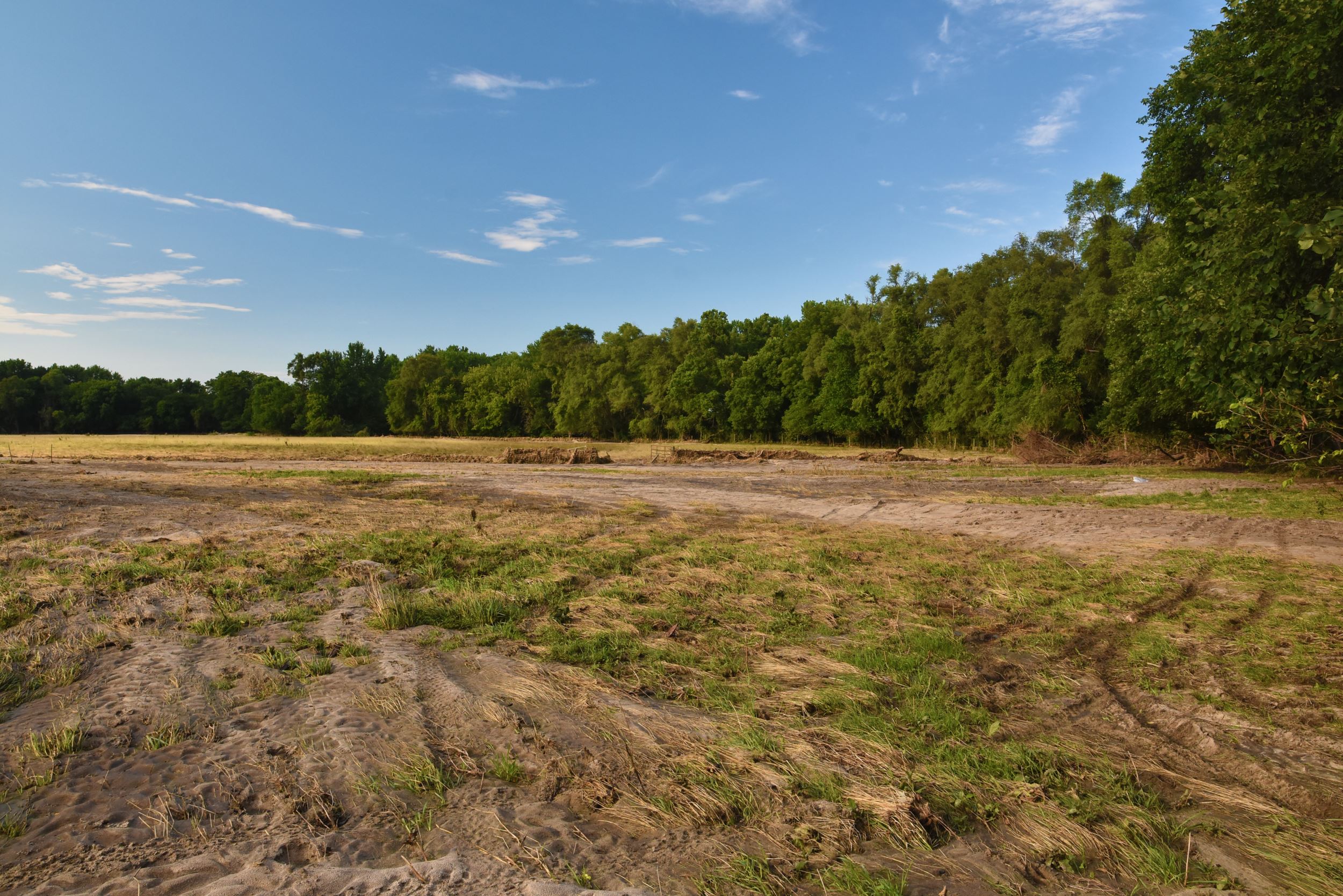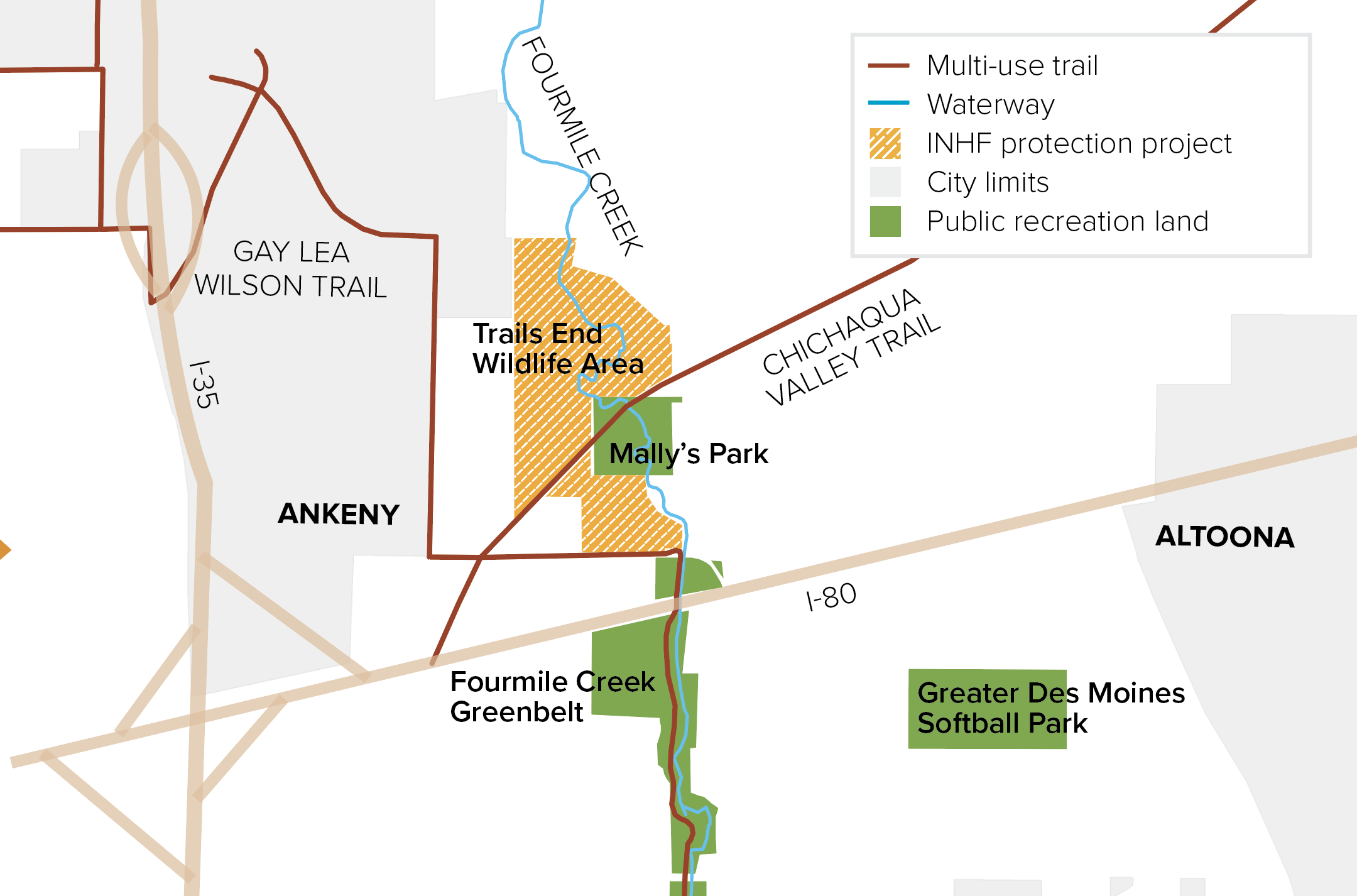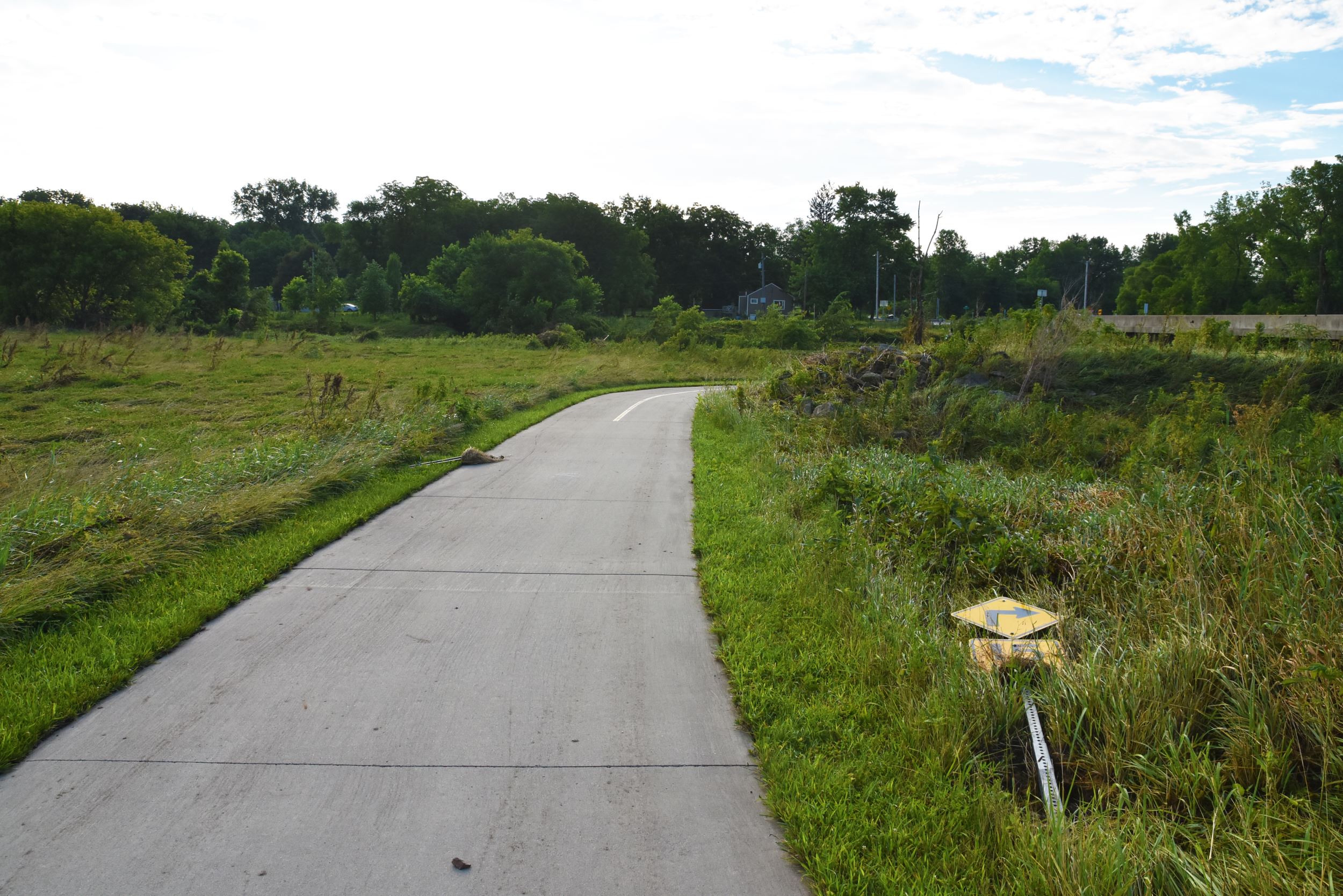Natural Solution
By Rowan McMullen Cheng on January 31, 2019 in Blog
A flood-prone creek has wreaked havoc on Des Moines. New protection upstream aims to ease flooding woes.

On Sunday morning, July 1, 2018, Fourmile Creek crested at 17.47 feet. The creek, which runs through east Des Moines and northern Polk County, has seen regular flooding in the last decade. That July morning, it reached its highest recorded height ever, spurring evacuations of nearby neighborhoods. Between then and now, the city of Des Moines has spent millions buying out 49 flood-damaged homes near the creek.
The floods of 2018 impacted many across the state and left Iowans wondering: What can be done about the increase in severe flooding events the state is seeing? INHF is working to make more natural habitat part of the solution.
INHF recently purchased two adjacent properties in northeast Polk County that will eventually transfer to the Polk County Conservation Board (PCCB). The new Trails End Wildlife Area will permanently protect greenspace and ease flooding in Mally’s Park in the community of Berwick, just east of Ankeny and within the Fourmile Creek floodplain. Once completed, the greenspace will help protect about five miles and hundreds of acres of wetland habitat.
“One of the most effective ways to reduce flood damage is protecting land upstream along the river,” said Ross Baxter, INHF land projects director. “Properties like the Trails End Wildlife Area, once restored, are so important because in their natural state, they hold and retain water to a much greater extent than developed land.”
The area will protect about 200 acres of floodplain habitat and outdoor recreation space. Two multi-use trails run through the area — the Chichaqua Valley Nature Trail and the Gay Lea Wilson Trail — both heavily used by surrounding communities and the Des Moines metro area.
The area’s natural features and location make it a high conservation priority for surrounding cities and the PCCB, which will use Polk County Water and Land Legacy Bond funding to purchase the area. The quickly growing developments in the watershed reduces the amount of water the land can hold, causing Fourmile Creek’s banks and floodplain to ll faster and more aggressively. The newly protected area aids with this, as identified in the Fourmile Creek Watershed Plan.
“With more and more of that water upstream being diverted for housing, it puts that much more pressure on Fourmile Creek,” said Baxter. “Protecting the land also builds greenspace for future generations in an area that probably won’t have much 50 years from now. Considering this region is one of Iowa’s most densely populated, its protection is a service to mitigate flooding impacts.”
 For successful flood mitigation and water retention, Polk County will restore the area, including the creek bank and former oxbows, which will reduce water levels during high precipitation events and help restore ecological function to Fourmile Creek and the surrounding land.
For successful flood mitigation and water retention, Polk County will restore the area, including the creek bank and former oxbows, which will reduce water levels during high precipitation events and help restore ecological function to Fourmile Creek and the surrounding land.
“You can spread the water out, reduce nitrate in the water, and give the sediment the chance to settle out,” says PCCB Ecologist Doug Sheeley.
With the wetland features returned to their historic glory, Sheeley predicts anything from “dragonflies to deer” to return in tandem. “It’s kind of the eld of dreams thing,” says Sheeley. “’If you build it, they will come.’ It’s already got three streams coming in; the stage is set.”
The Trails End Wildlife Area’s ultimate purpose is “to have a good, healthy, functioning ecosystem with some functional amenities on it to serve the public,” according to Sheeley. In addition to restoring the Fourmile Creek floodplain back to what is was historically, the area is meant to serve multiple needs. Outdoor recreation opportunities include bird watching and biking while habitat protection includes wildlife migration security and ecosystem balance.
“While the need for this protection was highlighted by a flooding disaster, it ultimately provides countless benefits for the area,” said Baxter. “Looking to the future, this type of protection is one of the best solutions for flood prevention and healthy ecosystems.”